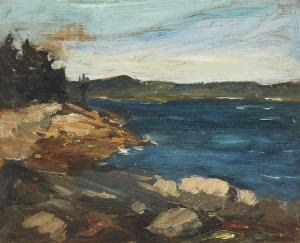I was recently asked by friends about the practice of destroying paintings. My friends were shocked that a painter would destroy a canvas that he or she had labored long and hard over. They begged me to explain how such a thing could happen. Hmmm. I immediately remembered what they say about professional photographers: The difference between the professional photographers and the rest of us is that the pros only show us a very small percentage of the photos they actually take. in other words, ruthless editing is essential!
I explained to my friends that painting is like any other enterprise in life--a lot of practice is required in order to make progress. You've got to put in the mileage. And along the way, there will be paintings that are just not up to snuff. You might stick them in the closet, thinking you will re-work them later. Or maybe you don't want to admit how flawed they are, so you hope that when you pull them out later they will be better. (Wishful thinking). Alas, my storage space is not infinite, and so eventually the new works crowd out the old, and the old works that never passed muster must be destroyed.
The phenomenon was described perfectly in the book Art & Fear. The authors wrote, "The function of the overwhelming majority of your artwork is simply to teach you how to make the small fraction of your artwork that soars." They noted that even the failed paintings are essential. I might say ESPECIALLY the failed paintings are essential. In one's failures lie the seeds of future successes.
As we can see from the original score above, even Beethovan struggled and made mistakes. But we don't usually see the score, which reveals his struggles--we only hear the beautiful music of the finished symphony. I wish that were the case with visual artists, but alas our mistakes are more tangible. At least until they hit the dust bin!
There is a real sense of catharsis when the old, failed paintings are destroyed. Getting rid of the failures makes me feel so light, so energized, and so open to new ideas. It's a great New Year's ritual--what better frame of mind to start the New Year?
As we can see from the original score above, even Beethovan struggled and made mistakes. But we don't usually see the score, which reveals his struggles--we only hear the beautiful music of the finished symphony. I wish that were the case with visual artists, but alas our mistakes are more tangible. At least until they hit the dust bin!
There is a real sense of catharsis when the old, failed paintings are destroyed. Getting rid of the failures makes me feel so light, so energized, and so open to new ideas. It's a great New Year's ritual--what better frame of mind to start the New Year?

















































